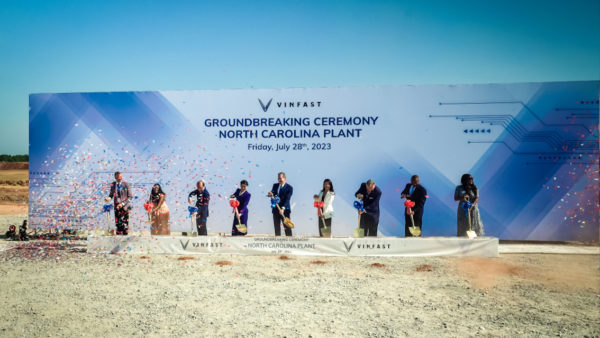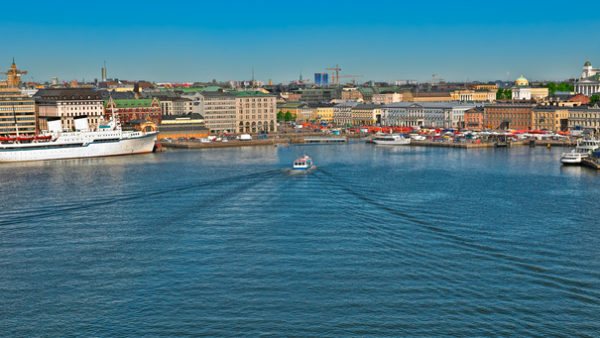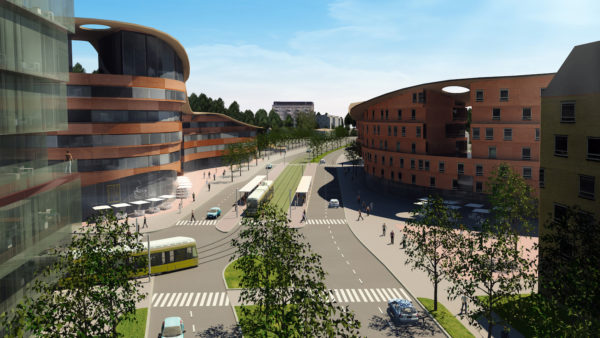A Canadian startup is pioneering technology to offset cement’s massive carbon footprint, reports Bluebeam, Inc.
Concrete is the world’s most popular building material-and one of its largest source of greenhouse gases. The production of cement, the binding ingredient that turns sand, gravel and water into concrete, accounts for roughly 7% of global carbon dioxide emissions. Put another way, if the industry were a country it would be the world’s third largest emitter.
There’s a reason why concrete is so widely used. The raw ingredients are cheap and abundant, and when mixed together, become a pourable substance that hardens quickly into one of the most durable materials. Some 10 billion metric tons of concrete are poured around the world every year, and cement production is expected to increase as our human population and infrastructure needs grow.
At the same time, to meet the goals of the Paris Agreement to limit global warming, emissions from the cement industry need to fall by more than a quarter in the next 11 years. Fortunately, a Canadian startup called CarbonCure is pioneering technology to offset a substantial portion of cement’s carbon footprint.Â
CO2 mineralised concrete
CarbonCure’s technology is based on a chemical reaction. When carbon dioxide is injected directly into cement as it’s mixed, the gas interacts with calcium ions to produce a mineral called calcium carbonate.
"This reaction has been understood by the scientific community for about a century," says Christie Gamble, the senior director of sustainability at CarbonCure. The company’s innovation, Gamble says, was in engineering technology that harnesses that chemical reaction to sequester carbon dioxide.
Concrete producers license the technology from CarbonCure on a monthly basis, which reduces the upfront costs. The company helps connect producers to local carbon dioxide suppliers, which typically capture the greenhouse gas from industrial sources, such as fertiliser plants, and distribute it. "It’s the same carbon dioxide that’s used for the carbonated beverage industry," Gamble says. "What’s happening is, currently, that carbon dioxide remains a gas and ends up going back into the atmosphere. So there’s no net positive environmental benefit." But when that same carbon dioxide is mixed with cement, it’s transformed into a mineral and permanently sequestered in the material.
The carbon dioxide also increases the compressive strength of the concrete, allowing producers to use less cement and offsetting the cost of purchasing the gas. Adding carbon dioxide doesn’t appear to significantly impact any other characteristics of the concrete important to producers and users, such as the set time.
Reduced emissions
In total, CarbonCure has the potential to cut the concrete industry’s carbon dioxide emissions by 500 million tons every year, if its technology is fully adopted by the industry around the globe. Some 150 concrete plants have partnered with CarbonCure, mostly in the United States and Canada. For context, Gamble notes, there are about 6,500 concrete plants in North America.
"We are still very early in the adoption phase," she says. Right now, producers are seeing a 5% reduction in their carbon footprint, and Gamble says the company is currently developing technologies "that have the potential to double if not triple that impact."
But demand for carbon dioxide mineralised concrete is growing, thanks in part to city and county level climate action. Honolulu was the first city to adopt a resolution prioritising the use of the greener concrete for city infrastructure and building projects, and the city’s Department of Transportation plans to use it in all of its construction projects going forward. In tests, the Honolulu DOT found it easier to work with compared to traditional concrete.
Earlier this year at the U.S. Conference of Mayors, mayors from the more than 1,400 cities across the country with populations greater than 30,000 adopted a similar resolution. But to get the kind of widespread adoption necessary to achieve its mission of cutting 500 million tons of emissions, Gamble says structural engineers need to review the current specification practices for concrete. "In particular, the use of prescriptive specifications of minimum cement content are often the limiting factors that can prevent the adoption of not only carbon dioxide mineralisation," she says, "but many kinds of concrete production practices that improve the concrete quality and improve sustainability."
Image: Construction of Hanoi metro line 2 (http://shansov.net/CC BY-SA 3.0)
- This article has been reprinted with permission from GCR sponsor, Bluebeam, Inc., provider of construction collaboration technologies.










